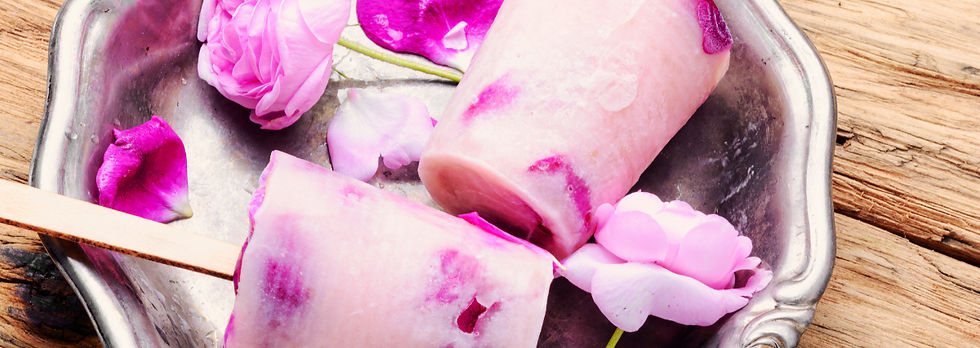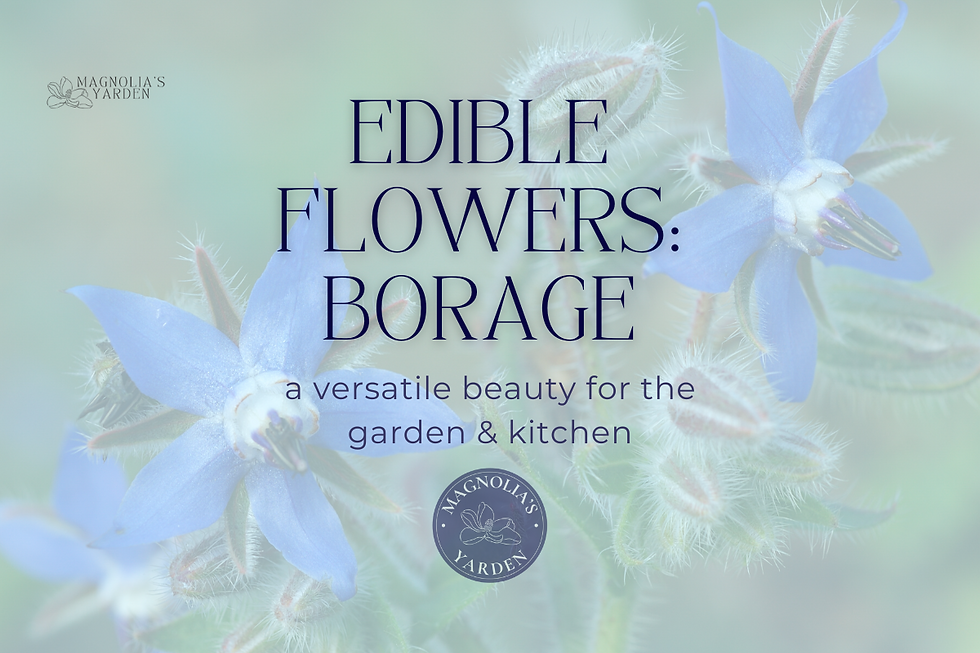A Simple Recipe: Make Rose Water and Get Cooking with this Luxurious Flower
- Magnolia's Yarden
- May 1, 2019
- 3 min read
Updated: Sep 2
Romantic, refreshing, and endlessly useful—learn how to craft your own rose water with edible petals from the Yarden.
Rose season is here, and there’s no better time to gather a little floral magic for yourself. If you’ve never made your own rose water before, let us tell you—it’s pure enchantment. Soft, fragrant, and gently soothing, rose water has been cherished for centuries in skincare, cooking, and various celebrations.
At Magnolia’s Yarden, we believe flowers are more than beautiful—they’re practical, powerful, and made to be shared. Rose water is a perfect example of that philosophy in action. From ancient beauty rituals to modern-day desserts and bath rituals, it’s a timeless way to bring the garden into your daily rhythm.

Why We Love Rose Water
Rose water is more than just a pretty scent. It contains natural oils, antioxidants, and calming properties that benefit the skin, lift the mood, and subtly flavor your favorite sweets. Whether misted onto your face or splashed into lemonade, it’s elegance in a bottle—and once you make your own, you’ll never want to be without it.
What you’ll need to make rose water:
1 cup fresh, organic rose petals (from your garden or Magnolia’s Yarden edible rose petals)
1 cup of distilled water
Cheesecloth or fine mesh strainer (for straining)
Small pot with a lid
Clean glass bottle or jar for storing
Optional: a few drops of essential oil, a fresh mint leaf, a splash of vanilla, or a touch of witch hazel
Tip: Always use roses that are pesticide-free and food-safe. Our edible roses are harvested by hand with care for beauty, fragrance, and safety.
Let’s Make Rose Water:
1. Harvest Gently
Choose fresh, pesticide-free rose petals. Rinse them in cool water and pat dry to remove any dust or critters.
2. Simmer Softly
Place petals in a small pot with 1 cup of distilled water. Cover with a lid and simmer on low heat for 25–30 minutes. Don’t let it boil—this is a gentle extraction, not a rolling cook.
3. Strain & Store
Let the mixture cool slightly, then strain through cheesecloth into your clean jar or bottle. Add any optional ingredients now, seal the container, and shake gently.
4. Chill & Label
Refrigerate your rose water and use it within one week for the best freshness. For more extended storage, freeze in ice cube trays and defrost as needed.
Optional Ingredients
Lavender or Peppermint Essential Oil – for added scent and calming benefits
Witch Hazel – adds toning properties for skincare use
Aloe Vera Gel – boosts hydration for sensitive skin
Lemon Juice – helps brighten and balance skin tone
Vegetable Glycerin – locks in moisture for homemade facial sprays
Fresh Mint – adds a fresh garden twist when used in culinary recipes
Feel free to experiment and find your favorite blend.

Ways to Use Your Rose Water:
In the Kitchen:
Add a splash to cakes, frostings, or lemonade
Drizzle over fruit or whipped cream
Infuse shortbread cookies or meringues
In Skincare:
Mist over your face as a natural toner
Mix with witch hazel or aloe vera for a DIY facial mist
Use as a cooling spray after sun exposure
In Daily Rituals:
Add to your bath or linens
Use as a delicate perfume
Sprinkle on table settings for garden-inspired charm
Why We Love This Process
There’s something rewarding about transforming your garden’s beauty into something that nourishes and soothes. With just a few petals and a bit of time, you’ve created something luxurious, useful, and wholly yours.
This rose season, don’t just admire your blooms—let them fill your life in new ways. Bottle up a bit of their magic and enjoy the romance of the garden, one mist at a time.
Ready to Make Your Own?
→ Shop Magnolia’s Yarden Edible Rose Petals for your next batch of rose water.
→ Subscribe to our newsletter for more garden-to-table DIYs, seasonal blooms, and edible flower recipes.
Happy cooking with flowers!
~ Danielle
❀ Live your best botanical life from the garden to the kitchen! ❀

Share Your Edible Flower Moments
We love seeing your garden through your eyes. Tag @magnolias_yarden on Instagram or use #YardenInBloom to show us your summer harvest, rose flushes, cut flower arrangements, and shady spots you’re tending with care. We’ll be sharing favorites throughout the season—and might feature yours in our following newsletter!
.png)





Comments